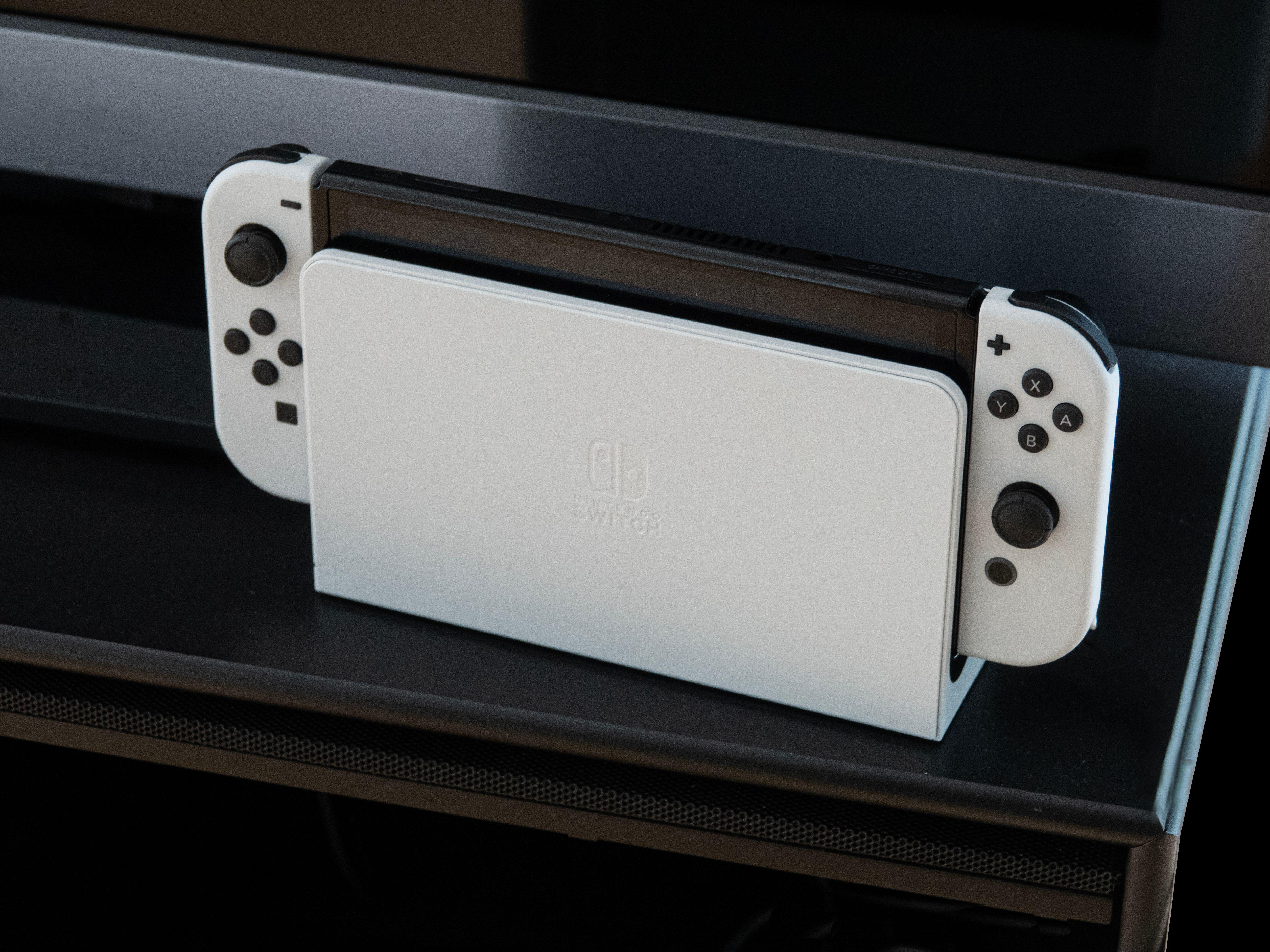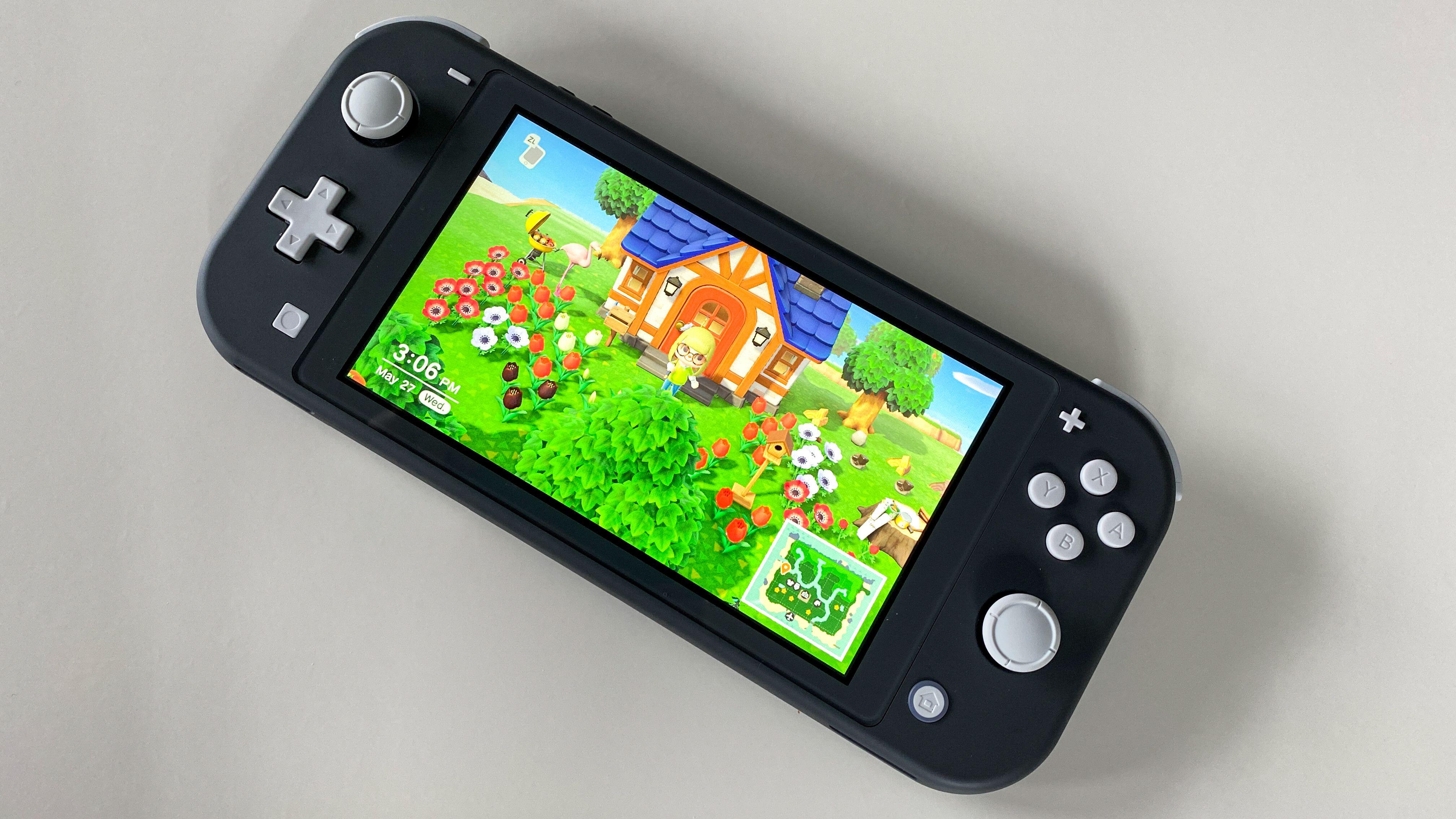Nintendo Switch vs OLED - we compare differences and which is better value for money
Plus whether it's a good investment for your child
Stephanie Lowe

Kids as young as six years old know what a Nintendo Switch is, so many parents may be in the throes of the Nintendo Switch VS OLED debate. Though you'd be forgiven for thinking they're the same, as they do kind of look... identical, they are not and we investigate a little further for you to help make your choice a little easier.
The Switch is the original - released in 2017, while the OLED is newer - released in 2021. The Nintendo Switch and OLED are considered two of the best kids toys as they're a games console that also helps develop imagination and dexterity. Whether you want to or not, you (and many other parents) may be considering the Nintendo Switch for your child, after possibly checking out Lego Vs Playmobil and Yoto Vs Tonie (the top audio boxes).
In this article we look at both the original Nintendo Switch, for sale at £257.40 on Amazon and the Nintendo Switch OLED, for sale at £267.40 on Amazon if you're looking at investing in a Switch, we cut out the confusing technical jargon and explain which is better value for money - the OLED or the Switch.
Nintendo Switch vs OLED
Nintendo Switch is the third best-selling console of all time, behind the Sony Playstation 4 and the Nintendo GameBoy, according to The Verge. The numbers don't lie, figures from Nintendo show that between April and July 2023, a total of 3.91 million Nintendo Switch devices (including the Switch, Switch Lite and Switch OLED) were sold globally, compared to approx. 3.4 million in 2022. With 2.83 million of those sales attributed to the OLED version of the Switch.
Goodto family editor and mum-of-one, Stephanie Lowe tells us how they never thought they would own a Switch. "Buying my five year old a Switch was never my plan - no judgement, it just wasn't - but my brother handed down his old one, so now he loves Super Mario kart, and to be honest I love playing it with him and I'm glad we have it."
Difference between Nintendo Switch and OLED
The main differences between the Nintendo Switch and the OLED come down to the screen, the speakers and the built in storage capacity. And of course price.
While the Switch has an LCD (liquid crystal display) screen, the OLED version has an OLED (organic light-emitting diode) screen. It's state-of-the-art display technology offers a crisper, brighter display that looks good from all angles. If this all sounds a bit too technical, Business Insider has a really good explanation of the main differences between the screen types.
Parenting advice, hot topics, best buys and family finance tips delivered straight to your inbox.
What is a Nintendo Switch?
The Nintendo Switch is a games console that lets you play either connected to a TV, or as a handheld device thanks to the built-in screen. There are also different versions, including the Switch Lite and the Switch OLED.
It says: "On a technical level, LCD screens work by illuminating all the pixels with a backlight; on an OLED screen, each individual pixel creates its own light. This means that when an OLED wants to show the color black, it can completely turn off its pixels to erase all light, while most LCDs can only dim the lights."
The screen on the OLED version is also bigger than the screen on the original Switch. It's got a 7in screen, compared to the 6.2in screen on the original Switch.
According to the Nawara Brothers Homes Store when choosing between the OLED or LCD, it's worth noting that the OLED displays can be better for your eyesight. They have more natural lighting, better colour contrast, and a wider colour range. However, no matter what type of display you have, you will hurt your eyesight if you don't practice safe TV viewing. i.e. suitable distance from eyes, the basic rule is to sit at least five times as far away from the screen as it is wide, have lights on, and only use the screen for short periods of time.

The speakers are better on the OLED version too, and while the original Switch offers 32 gigabytes (GB) of internal storage, the OLED version has 64GB. This means you can download and store more games on the OLED model than you can on the original Switch. Although you can use physical game cartridges in both models, or expand the storage up to two terabytes (1,000 gigabytes equals one terabyte) using a micro SD card, like this Nintendo Switch-compatible one from Amazon.
The OLED version is arguably sturdier than the original version too - which could be great for parents who are worried about the console getting damaged easily.

While the Nintendo Switch has a smaller screen than the OLED version, when connected to a TV or monitor via the dock, there is no difference in picture quality between the original Switch and the OLED
The Switch OLED unit is made from a magnesium alloy which is stronger than the plastic used for the original Switch. The OLED also has a wider kickstand, which is more solid than the kickstand on the original Switch.
When it comes to price, while the Switch has an RRP of £259.99, the OLED is £50 more at £309.99. But you can currently find the OLED considerably cheaper on Amazon. And not forgetting Black Friday, which happens so it's worthwhile seeing if you can snap up your Switch of choice when those deals land.
What's the same on the Nintendo Switch and OLED?
While there are some differences between the two Nintendo models, a lot remains the same;
- Controllers
- Games
- Graphics card
- Internal processor
- Battery life (4-9 hours)
So, while the OLED screen might be bigger and brighter, you won't find that the OLED is faster than the Switch, or that the graphic capabilities are vastly different. If you already have a Switch and tend to use the dock to play using a monitor or TV screen, you won't notice a difference in picture quality between the original and the OLED. It's worth noting that while the battery life is the same for both models older models will see that lifespan decrease as time goes on.

The original Switch and the OLED (pictured) have the same internal processor and graphics card, which means each console offers the same level of performance
Why is Nintendo Switch OLED more expensive than the Switch?
The Nintendo Switch OLED is more expensive than the original Switch because of its extra features and the fact that it's a newer release, having gone on sale almost four years after the original, on 8 October 2021.
But rumours are rife of a Nintendo Switch 2 coming in the near future, which is likely to pip the OLED model to the post as the most expensive console of the bunch.
Which is better value for money - Nintendo Switch or OLED?
If you are buying a Nintendo Switch console for the first time, then the OLED is better value for money, even more so if you manage to pick it up for less than the RRP of £309.99. It's got a bigger screen, better sound and more built-in storage capacity.
But if your child already has a Nintendo Switch, the differences aren't worth the cost to upgrade to the OLED model. The devices have a lot of core things in common, such as the processor (which is like the brain of the console) and the graphics card. These determine performance, and are identical in each model.
As there aren't currently any games that are exclusive to the OLED, and that the differences are largely cosmetic, you can hold fire if your child already has a Switch.
Which Nintendo Switch should I buy my child?
When choosing which Nintendo Switch model to buy your child, it's worth considering your budget, the age of your child before you decide and how they will play with the Switch.
If your child only wants to use the Nintendo Switch as a handheld console, then you might find that the Nintendo Switch Lite is all you need, and you can currently find this for under £200 at Amazon, Currys and Argos. But if your child is likely to play handheld and connected to a TV, then the OLED model is a good choice if you don't already own the original Switch.

The Nintendo Switch Lite is a cheaper alternative to the original Switch or OLED models, but play is only possible on the handheld console - it can't be connected to a TV or monitor
We spoke to dad-of-two Pete, whose daughters (aged five and eight) each have a Switch, to see how he chose which model to get: "My eldest daughter uses my original Switch, which impressively still has a good three hour battery life, despite it being six and a half years old and having a lot of use. And in my opinion this is the best model for kids under 10 as I don't think they would notice or appreciate the slightly better screen on the OLED version enough to warrant a higher price tag.
"My youngest daughter has the Nintendo Switch Lite as she'll only be using it as a handheld device, and we already have capacity to play using the TV using the dock for my eldest daughter's Switch."
Goodto family editor and mum-of-one, Stephanie Lowe tells us why the Nintendo Switch will be staying in her home; "It does the job, we tend to only play on the living room TV so don't really see a need to upgrade."
Nintendo Switch Black Friday Deals
Historically Nintendo Switch always gives good deals across Black Friday. We remember one of the best Nintendo Switch deals from last year - which were offered across almost every retailer; the Nintendo Switch console was for sale along with Mario Kart 8 Deluxe and a three-month Nintendo Switch Online membership - all for £259.99. Which means that in paying full price for the console, you got the game and membership for free. On the flip side, we didn't come across too many deals on the Nintendo Switch OLED. But it's always good to keep your eyes out, as things can always change. Black Friday likes to keep us on our toes.
For great value for money, it's also worth knowing how to find cheap LEGO, and the discount codes you can use to get more money off.
Sarah is GoodtoKnow’s Money Editor. After Sarah graduated from University of Wales, Aberystwyth, with a degree in English and Creative Writing, she entered the world of publishing in 2007, working as a writer and digital editor on a range of titles including Real Homes, Homebuilding & Renovating, The Money Edit and more. When not writing or editing, Sarah can be found hanging out with her rockstar dog, getting opinionated about a movie or learning British Sign Language.
- Stephanie LoweFamily Editor